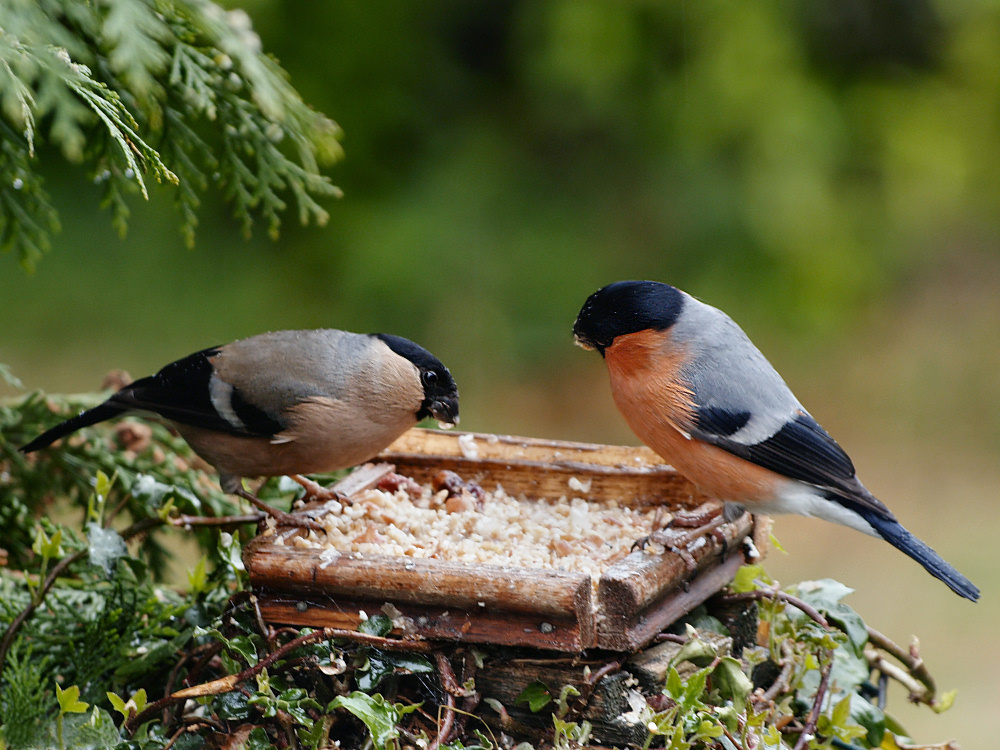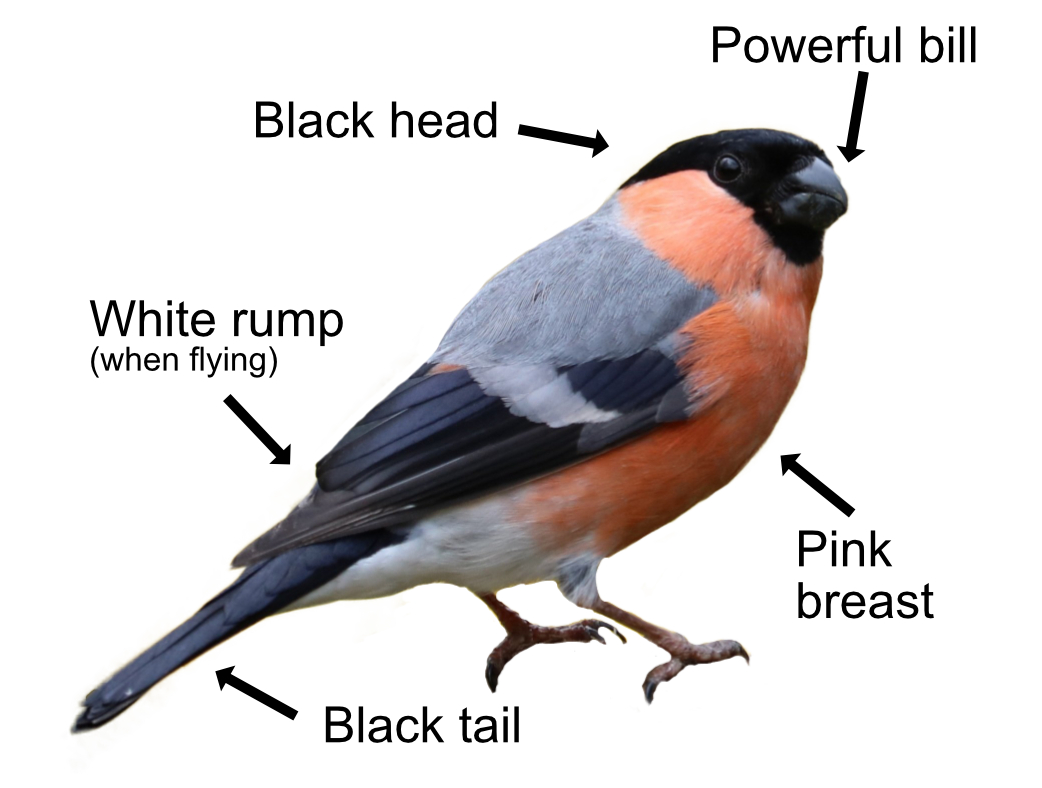
He is the Scarlet Pimpernel with his pink breast and secretive nature. "They seek him here, they seek him there, they seek the finchy everywhere!". They can be found in thick bushes, orchards, and occasionally in gardens. You are most likely to see him flashing his white bum as he flies away to hide.
The Bullfinch is a plump bird with a short, neat, powerful black bill. The tail, wings and head are black though with a distinctive white rump. The male has a pinkish red breast (which could be why he is so shy) and the female has a browny-grey breast. There is a pale bar on their wings.
They have a very soft, "peu, peu" call that is seldom heard. Even rarer is their 'squeaky bicycle song' which consists of a string of simple notes that sound like a distant squeaky bicycle being wheeled slowly along.

The Bullfinch's main food is tree and fruit buds. They love ash tree buds in winter and fruit tree buds in spring, which they can snaffle at a rate of 30 a minute! They also eat small snails, which they can crack open with their powerful beaks. They are seldom seen feeding far from cover and normally feed directly off plants and, if you are really lucky, your bird feeder. This love of fruit buds is their downfall as it makes them very unpopular with farmers and gardeners. Some people consider the Bullfinch a pest. In the 16th century, Henry VIII condemned the Bullfinches eating of fruit on trees as a 'criminal act', and an Act of Parliament declared that one penny would be paid for every bullfinch trapped and killed!
Bullfinches are usually seen in pairs or family groups, not in flocks. They build their nest in a big, thick bush in May. It is made of twigs, moss and lichen. They lay up to 6 eggs which hatch after 12 days. The young can fly after 15 days but are fed by mum and dad for a further 20 days. Food is carried to the young in pouches in the bottom of the Bullfinch's mouth. There are two and sometimes three broods with parenthood finishing in July when they start to moult (change their feathers). Unlike a lot of birds, they stay the same colour, not changing to a duller winter coat.
The Bullfinch is mainly a local resident but can travel up to 28 kilometres to find a mate in the breeding season - or a juicier orchard. There are 200,000 pairs thinly distributed throughout Britain. Sadly, there has been a rapid decline in numbers over the last 25 years as there are now fewer orchards and suitably thick hedges. Their Latin name is 'pyrrhula pyrrhula' which is derived from Greek and means 'flame coloured' because of their pink breast which is why they hide in shame.